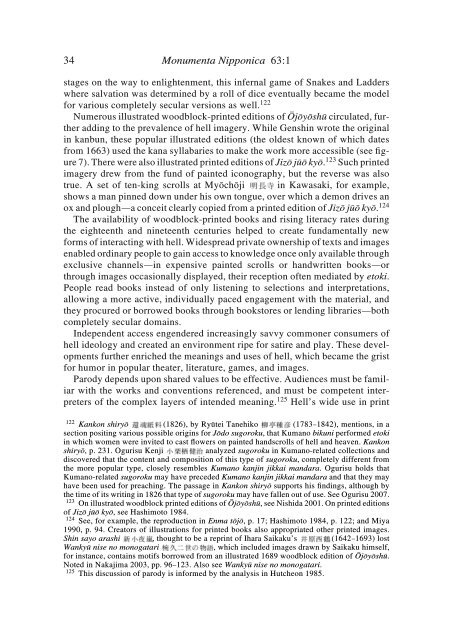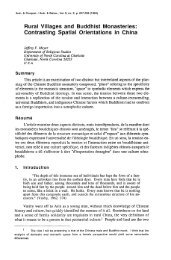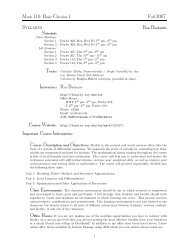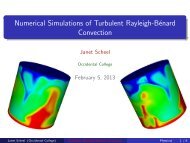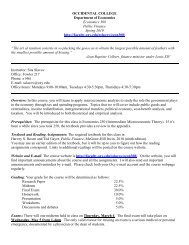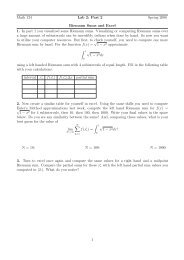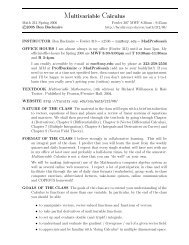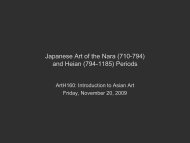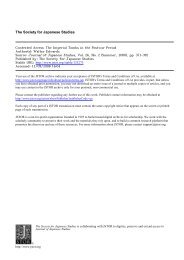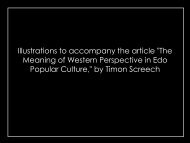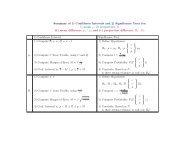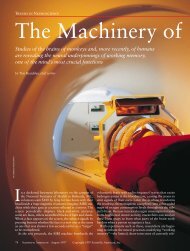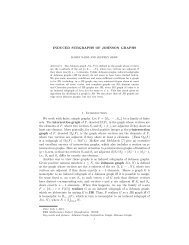A Primer on Japanese Hell Imagery and Imagination - Occidental ...
A Primer on Japanese Hell Imagery and Imagination - Occidental ...
A Primer on Japanese Hell Imagery and Imagination - Occidental ...
Create successful ePaper yourself
Turn your PDF publications into a flip-book with our unique Google optimized e-Paper software.
34<br />
M<strong>on</strong>umenta Nipp<strong>on</strong>ica 63:1<br />
stages <strong>on</strong> the way to enlightenment, this infernal game of Snakes <strong>and</strong> Ladders<br />
where salvati<strong>on</strong> was determined by a roll of dice eventually became the model<br />
for various completely secular versi<strong>on</strong>s as well. 122<br />
Numerous illustrated woodblock-printed editi<strong>on</strong>s of Ôjôyôshû circulated, further<br />
adding to the prevalence of hell imagery. While Genshin wrote the original<br />
in kanbun, these popular illustrated editi<strong>on</strong>s (the oldest known of which dates<br />
from 1663) used the kana syllabaries to make the work more accessible (see figure<br />
7). There were also illustrated printed editi<strong>on</strong>s of Jizô jûô kyô. 123 Such printed<br />
imagery drew from the fund of painted ic<strong>on</strong>ography, but the reverse was also<br />
true. A set of ten-king scrolls at Myôchôji in Kawasaki, for example,<br />
shows a man pinned down under his own t<strong>on</strong>gue, over which a dem<strong>on</strong> drives an<br />
ox <strong>and</strong> plough—a c<strong>on</strong>ceit clearly copied from a printed editi<strong>on</strong> of Jizô jûô kyô. 124<br />
The availability of woodblock-printed books <strong>and</strong> rising literacy rates during<br />
the eighteenth <strong>and</strong> nineteenth centuries helped to create fundamentally new<br />
forms of interacting with hell. Widespread private ownership of texts <strong>and</strong> images<br />
enabled ordinary people to gain access to knowledge <strong>on</strong>ce <strong>on</strong>ly available through<br />
exclusive channels—in expensive painted scrolls or h<strong>and</strong>written books—or<br />
through images occasi<strong>on</strong>ally displayed, their recepti<strong>on</strong> often mediated by etoki.<br />
People read books instead of <strong>on</strong>ly listening to selecti<strong>on</strong>s <strong>and</strong> interpretati<strong>on</strong>s,<br />
allowing a more active, individually paced engagement with the material, <strong>and</strong><br />
they procured or borrowed books through bookstores or lending libraries—both<br />
completely secular domains.<br />
Independent access engendered increasingly savvy comm<strong>on</strong>er c<strong>on</strong>sumers of<br />
hell ideology <strong>and</strong> created an envir<strong>on</strong>ment ripe for satire <strong>and</strong> play. These developments<br />
further enriched the meanings <strong>and</strong> uses of hell, which became the grist<br />
for humor in popular theater, literature, games, <strong>and</strong> images.<br />
Parody depends up<strong>on</strong> shared values to be effective. Audiences must be familiar<br />
with the works <strong>and</strong> c<strong>on</strong>venti<strong>on</strong>s referenced, <strong>and</strong> must be competent interpreters<br />
of the complex layers of intended meaning. 125 <strong>Hell</strong>’s wide use in print<br />
122 Kank<strong>on</strong> shiryô (1826), by Ryûtei Tanehiko (1783–1842), menti<strong>on</strong>s, in a<br />
secti<strong>on</strong> positing various possible origins for Jôdo sugoroku, that Kumano bikuni performed etoki<br />
in which women were invited to cast flowers <strong>on</strong> painted h<strong>and</strong>scrolls of hell <strong>and</strong> heaven. Kank<strong>on</strong><br />
shiryô, p. 231. Ogurisu Kenji<br />
analyzed sugoroku in Kumano-related collecti<strong>on</strong>s <strong>and</strong><br />
discovered that the c<strong>on</strong>tent <strong>and</strong> compositi<strong>on</strong> of this type of sugoroku, completely different from<br />
the more popular type, closely resembles Kumano kanjin jikkai m<strong>and</strong>ara. Ogurisu holds that<br />
Kumano-related sugoroku may have preceded Kumano kanjin jikkai m<strong>and</strong>ara <strong>and</strong> that they may<br />
have been used for preaching. The passage in Kank<strong>on</strong> shiryô supports his findings, although by<br />
the time of its writing in 1826 that type of sugoroku may have fallen out of use. See Ogurisu 2007.<br />
123 On illustrated woodblock printed editi<strong>on</strong>s of Ôjôyôshû, see Nishida 2001. On printed editi<strong>on</strong>s<br />
of Jizô jûô kyô, see Hashimoto 1984.<br />
124 See, for example, the reproducti<strong>on</strong> in Enma tôjô, p. 17; Hashimoto 1984, p. 122; <strong>and</strong> Miya<br />
1990, p. 94. Creators of illustrati<strong>on</strong>s for printed books also appropriated other printed images.<br />
Shin sayo arashi , thought to be a reprint of Ihara Saikaku’s (1642–1693) lost<br />
Wankyû nise no m<strong>on</strong>ogatari<br />
, which included images drawn by Saikaku himself,<br />
for instance, c<strong>on</strong>tains motifs borrowed from an illustrated 1689 woodblock editi<strong>on</strong> of Ôjôyôshû.<br />
Noted in Nakajima 2003, pp. 96–123. Also see Wankyû nise no m<strong>on</strong>ogatari.<br />
125 This discussi<strong>on</strong> of parody is informed by the analysis in Hutche<strong>on</strong> 1985.


